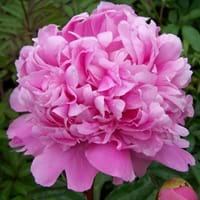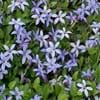Life Span
Perennial
Annual
Type
Flowering Plants, Shrubs
Shrub
Origin
Central Asia, China, Northern America, The Hiamalayas
China, Japan
Types
Bigleaf hydrangea, Hortensia, Smooth hydrangea, Oakleaf hydrangea, Annabelle
Not Available
Habitat
Forest edges, Hillside, Woods
Grassland, Woods
USDA Hardiness Zone
Not Available
3-9
AHS Heat Zone
Not Available
8-1
Sunset Zone
21,22
A1, A2, A3, 1a, 1b, 2a, 2b, 3a, 3b, 4, 5, 6, 7, 8, 9, 10, 11, 14, 15, 16, 17, 18, 19, 20
Habit
Arching/Fountain-shaped
Upright/Erect
Flower Color
Blue, Dark Purple, Light Purple, Red, White
Light Pink, Pink, White
Flower Color Modifier
Bicolor
Not Applicable
Fruit Color
Not Available
Brown, Brownish Red, Green
Leaf Color in Spring
Dark Green
Green, Light Green
Leaf Color in Summer
Light Green
Red, Green, Light Green
Leaf Color in Fall
Several shades of Green
Red, Green, Light Green
Leaf Color in Winter
Light Green
Green
Leaf Shape
Oblovate
Arrowhead
Plant Season
Early Spring, Late Autumn
Early Fall
Sunlight
Full Sun
Full Sun, Partial shade
Type of Soil
Light
Loamy, Well drained
The pH of Soil
Acidic
Neutral
Soil Drainage
Average
Moist
Bloom Time
Spring, Summer
Early Summer, Late Spring, Spring, Summer
Repeat Bloomer
Insignificant
Yes
Tolerances
Drought
Cold climate, Heat Tolerance
Where to Plant?
Ground, Pot
Ground, Pot
How to Plant?
Seedlings, Stem Planting
Budding
Plant Maintenance
Medium
Medium
Watering Requirements
Not Available
Requires regular watering
In Summer
Lots of watering
Lots of watering
In Spring
Moderate
Moderate
In Winter
Average Water
Average Water
Soil pH
Not Available
Neutral
Soil Type
Not Available
Loam
Soil Drainage Capacity
Not Available
Well drained
Sun Exposure
Not Available
Full Sun, Partial Sun
Pruning
Remove damaged leaves, Remove dead branches, Remove dead leaves
Remove damaged leaves, Remove dead branches, Remove dead leaves
Fertilizers
All-Purpose Liquid Fertilizer
All-Purpose Liquid Fertilizer
Pests and Diseases
Red blotch
Botrytis Blight, Nematodes, Ring spot, Stem rot, Verticillium Wilt
Plant Tolerance
Drought
Drought
Flower Petal Number
Single
Not Available
Edible Fruit
Insignificant
No
Fragrant Flower
Insignificant
Yes
Fragrant Leaf
Insignificant
No
Fragrant Bark/Stem
Insignificant
No
Showy Foliage
Insignificant
No
Showy Bark
Insignificant
No
Foliage Texture
Bold
Coarse
Foliage Sheen
Not Available
Glossy
Evergreen
Not Available
No
Invasive
Not Available
No
Self-Sowing
Not Available
No
Attracts
Bees, Flies
Ants
Allergy
Chest tightness, Diarrhea, Dizziness, Nausea, Vomiting
Abdominal pain, Avoid during Pregnancy, Stomach pain, Vomiting
Aesthetic Uses
Not Available
Landscape Designing, Showy Purposes
Beauty Benefits
Not Available
Not Available
Edible Uses
Not Available
No
Environmental Uses
Air purification
Air purification
Medicinal Uses
Fever, Kidney problems, Urinary tract problems
Atherosclerosis, Chronic fatigue, Cold, Cough, Gout, Headache, hemorrhoids, Hepatitis, Liver problems, Menstrual Cramps, Muscle Pain, Nerve pain, Osteoarthritis, Premenstrual syndrome, Respiratory Disorders, Treating fever
Part of Plant Used
Flowers, Root
Flowers, Root, Seeds
Other Uses
Not Available
Showy Purposes, Traditional medicine, Use in Chinese herbology
Used As Indoor Plant
Not Available
Sometimes
Used As Outdoor Plant
Not Available
Yes
Garden Design
Not Available
Cutflower, Feature Plant, Foundation, Mixed Border
Botanical Name
Hydrangea
Paonia lactiflora
Common Name
Hydrangea or hortensia
Chinese Peony
In Hindi
Hydrangea
Paonia lactiflora
In German
Hortensie
Paonia lactiflora
In French
Hortensia
Paonia lactiflora
In Spanish
Hortensia
lactiflora paonia
In Greek
υδραγεία
Paonia lactiflora
In Portuguese
Hortênsia
Paonia lactiflora
In Polish
Hortensja
Paonia lactiflora
In Latin
Hibiscus
Paonia lactiflora
Phylum
Not Available
Magnoliophyta
Class
Not Available
Magnoliopsida
Order
Not Available
Dilleniales
Family
Not Available
Paeoniaceae
Genus
Not Available
Paeonia
Clade
Not Available
Angiosperms, Core eudicots, Eudicots
Tribe
Not Available
Not Available
Subfamily
Not Available
Not Available
Number of Species
Not Available
Importance of Blue Star Creeper and Paeonia Lactiflora
Want to have the most appropriate plant for your garden? You might want to know the importance of Blue Star Creeper and Paeonia Lactiflora. Basically, these two plants vary in many aspects. Compare Blue Star Creeper and Paeonia Lactiflora as they differ in many characteristics such as their life, care, benefits, facts, etc. Every gardener must at least have the slightest clue about the plants he wants to plant in his garden. Compare their benefits, which differ in many ways like facts and uses. The medicinal use of Blue Star Creeper is Fever, Kidney problems and Urinary tract problems whereas of Paeonia Lactiflora is Atherosclerosis, Chronic fatigue, Cold, Cough, Gout, Headache, hemorrhoids, Hepatitis, Liver problems, Menstrual Cramps, Muscle Pain, Nerve pain, Osteoarthritis, Premenstrual syndrome, Respiratory Disorders and Treating fever. Blue Star Creeper has beauty benefits as follows: Not Available while Paeonia Lactiflora has beauty benefits as follows: Not Available.
Compare Facts of Blue Star Creeper vs Paeonia Lactiflora
How to choose the best garden plant for your garden depending upon its facts? Here garden plant comparison will help you to solve this query. Compare the facts of Blue Star Creeper vs Paeonia Lactiflora and know which one to choose. As garden plants have benefits and other uses, allergy is also a major drawback of plants for some people. Allergic reactions of Blue Star Creeper are Chest tightness, Diarrhea, Dizziness, Nausea and Vomiting whereas of Paeonia Lactiflora have Abdominal pain, Avoid during Pregnancy, Stomach pain and Vomiting respectively. Having a fruit bearing plant in your garden can be a plus point of your garden. Blue Star Creeper has showy fruits and Paeonia Lactiflora has no showy fruits. Also Blue Star Creeper is flowering and Paeonia Lactiflora is not flowering . You can compare Blue Star Creeper and Paeonia Lactiflora facts and facts of other plants too.


